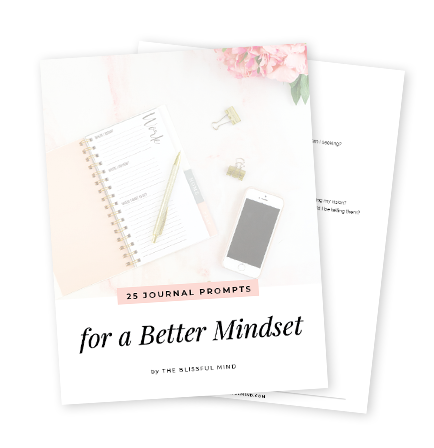The Complete Psychology Guide to Transforming Your Most Misunderstood Emotion
Understanding Anger: How to Manage Anger and Use It for Good
The Complete Psychology Guide to Transforming Your Most Misunderstood Emotion
Do you recognize that telltale wave of heat climbing up your torso when a driver cuts you off? Or that simmering irritation you feel when a colleague claims your idea as their own? Imagine if I told you these anger-triggering moments aren’t baggage to be contained or felt guilty about, but rather your key to invoking constructive transformation.
Anger is not your foe. Anger, like happiness, sadness, and fear, is a human emotion and is not destructive by itself, as is often portrayed by the society we live in. The problem is not anger; it is the way we have been taught to handle it.
Most people conform to one of two groups: they either erupt in destructive outbursts or they suppress their feelings until they break down. However, there is a third option, as programs in psychology show: understanding anger and how to transform its immense power into something positive.
If you want to take control of your anger and use it to enact positive change, this post will guide you step by step to achieve it.

The Truth Most People Don’t Know About Anger
What Anger Is—And Why It’s Valuable
Anger is a protective emotion, one that is meant to keep us secure and enable us to flourish. Sadly, it’s commonly viewed as an undesirable feeling.
Anger had a significant evolutionary role. It served to ready the body for a fight, a part of the fight, flight, or freeze response, enabling the body to defend itself, its family, and its possessions aggressively and with focus.
Anger fulfills important functions even today:
- It indicates the violation of our limits
- It fuels action against unfair treatment
- It gives the drive to implement changes
- It assists in enforcing our needs and principles
The Biology of Your Anger Behavior
Physical changes during anger:
- Pulse increases dramatically (reaching as high as 180 bpm)
- The body releases stress-related chemicals like adrenaline
- Muscles stiffen, getting ready for action
The crucial understanding: These reactions aren’t breakdowns—they represent your system’s method of readying you for response. The real question becomes: will you channel this power positively or negatively?
The 3 Forms of Anger (And Why People Make the Same Mistakes Over and Over Again)
- Destructive Anger: The Relationship Killer
This form of anger is the most recognized one—sudden, intense bursts of rage that burn bridges and spread discord.
Characteristics:
- Verbal or physical aggression
- Blame and personal attacks
- Impulsive reactions
- Regret and shame afterward
Why It’s Harmful: Destructive anger fuels anger further. Contrary to popular belief, research indicates that “venting” by yelling offers no relief. In fact, it strengthens neural pathways that make future outbursts more likely.
- The Silent Destroyer: Suppressed Anger
Managing anger can prove extremely difficult for many people. It can lead to deep consequences, physically and emotionally, when it is overlooked. Its effects are often neglected, and people try to ignore its signs altogether. This leads to the conclusion that most individuals are trying to ignore feelings of anger or attempting to hide them completely because of the physical and emotional toll it takes.
Characteristics:
- Passive-aggressive behavior
- Chronic resentment and bitterness
- Physical symptoms (headaches, digestive issues)
- Depression and anxiety
Why It’s Dangerous: When anger is suppressed, it doesn’t go away. Instead, it piles up beneath the surface and shows up as a biting sarcastic comment, chronic “forgetting” of important agreements, relentless grumbling, and a host of health problems.
- Healthy Anger: The Game-Changer
This is what real change looks like—shedding a destructive pattern and responding to frustration with thoughtful, intentional action.
Characteristics:
- Speaking plainly and directly
- Addressing the problem head-on instead of pointing fingers
- Setting boundaries that defend one’s rights without harming others
- Using one’s energy toward making something better
Why It Works: Healthy anger takes seriously the inner message of frustration but chooses a response that nurtures the bigger picture of well-being.

The 7 Hidden Triggers That Ignite More Anger Than You Need
Knowing the sources of your anger is important to managing your responses:
- The Expectation Trap
Insisting on a specific behavior from others and getting upset when that behavior isn’t met.
Solution: Understand that your expectations are only your preferences, not how the world operates. - The Fairness Obsession
Anger from perceiving any injustice because of a deep-seated belief in fairness.
Solution: Accept that life isn’t always fair and focus on what is in your control. - The Control Illusion
Trying to control what is outside of your influence and becoming angry when your control fails.
Solution: Clearly define the boundaries of what is within your control and what isn’t. - The Mind Reading Mistake
Assuming the reason why someone did something and getting angry from your interpretation.
Solution: Get clarity for doubts from people directly instead of assuming the worst. - The Perfectionism Problem
Having standards so high that anger emerges whenever reality fails to meet them.
Solution: Accept that “good enough” works and perfection is not necessary. - The Respect Demand
Seeing minor slights and interpreting them as major disrespect.
Solution: Consider other possibilities and deal with real disrespect calmly. - The Snowball Effect of Stress
When stress piles up, it amplifies the frustration you get from minor annoyances.
Solution: Take a step back, deal with the bigger picture of stress, and notice signs of emotional fragility.
The Latest ANGER Method in 5 Steps
Transforming anger into constructive action is a well-documented process, as introduced in the ANGER method:
A – Acknowledge the Anger
Don’t critique or suppress your anger. Accept it by saying, “I’m angry at the moment.”
Physical awareness: Identify the physical components of your anger, such as a tight jaw, clenched fists, or a racing heart. Recognizing these symptoms early provides an opportunity for greater regulation.
N – Name the Real Issue
Anger is a secondary emotion and often shields something deeper. Try to uncover it:
- Hurt: Emotional wounds caused by someone’s actions
- Fear: Concerns about impending loss
- Frustration: Being blocked from something important
- Powerlessness: Feeling unable to influence something that matters
Ask yourself: “What is really bothering me here? What is it that I need that is under threat?”
G – Get Perspective
Pause before reacting:
- The 6-10-60 Rule: Will this matter in 6 minutes? 6 months? 6 years?
- The Journalist Approach: How would an impartial journalist describe this situation?
- The Best Friend Test: What would I tell my best friend to do?
E – Evaluate Your Options
There is always more than one way to proceed:
- Direct conversation: Talk to the person calmly
- Strategic action: Take steps to improve the situation
- Boundary setting: Defend yourself without fighting back
- Acceptance: When things cannot be changed, focus your energy elsewhere
- Self-care: Attend to your own stress or needs
R – Respond Consciously
Respond the way you want to, based on what matters most, not just what matters in the moment.
Examples:
- “I want to discuss something that’s been bothering me…”
- “I’m feeling frustrated. Can we work together to find a solution?”
- Stepping away to cool off before talking
- Turning that energy into something useful
How to Turn Anger Into an Opportunity for Positive Growth
The Motivation Factor
Anger gives you energy and focus unlike anything else. Anger over injustice has historically enabled positive social change. For instance:
- Anger over civil injustices was harnessed by civil rights activists during peaceful protests
- Environmental advocates channel frustration over climate change into conservation efforts
- Advocacy in education is driven by parents’ anger at the lack of safety in schools
Positive Change From Personal Anger
Turn anger into a GPS for the things you value:
- Identify the pattern: Is there a recurring trigger for your anger? Which values are being violated?
- Channel the energy: Put boundaries in place, act to fix issues that matter, and use the drive to learn new skills
- Learn and grow: What can you learn about yourself from your anger? How can you better express your needs?
Advanced Anger Management Techniques That Actually Work
The Physiological Reset Method
Stress hormones inhibit clear thinking.
- Immediate (0–2 minutes): deep breathing, cold water on wrists/face, brisk activity
- Short-term (2–20 minutes): meditation, journaling, calming music
The Cognitive Restructuring Approach
Challenge anger-driven thoughts:
- Instead of: “This always happens to me!” → “This is frustrating but not permanent.”
- Instead of: “They’re doing this to hurt me!” → “I don’t know their motives. Let me ask.”
The Communication Transformation
Inappropriate: “You never listen! You’re so selfish!”
Improved: “When I’m interrupted, I feel unheard. Can you let me finish? I want to understand you too.”
Formula: “I feel [emotion] when [behavior] because [impact]. I need [request].”
Recognizing Anger Issues: When to Start Worrying
Indicators That Anger Management Therapy May Be Required
Seek professional assistance if you experience:
- Sudden outbursts more than once a week
- Anger causing harm to your career or personal relationships
- Physical acts like throwing objects or hitting people
- Episodes of rage lasting hours or days
- Feeling completely out of control
- Depression or anxiety alongside anger
The Connection to Physical Health
Chronic anger leads to:
- High blood pressure and heart disease
- Weakened immune system
- Digestive issues
- Sleep disorders
The good news: healthy anger management practices significantly reduce these risks.
Constructing Your Own Anger Management Framework
Step 1: Identify Your Triggers
- Notice physical cues of anger
- Track patterns and consistent triggers
- Recognize times of higher vulnerability
Step 2: Assemble Your Toolkit
- Choose 2–3 self-soothing strategies
- Identify supportive friends or family
- Prepare phrases for constructive dialogue
Step 3: Formulate Preventive Measures
- Reduce general stress levels
- Maintain healthy sleep, diet, and exercise
- Practice mindfulness daily
The 30-Day Anger Transformation Challenge
Week 1: Awareness Building
- Keep an anger journal
- Practice the ANGER method daily
Week 2: Communication Skills
- Use “I” statements in safe settings
- Practice active listening
Week 3: Physical Management
- Adopt stress-reducing routines
- Channel anger into physical exercise
Week 4: Integration
- Review achievements
- Plan long-term strategies
The Hidden Upside of Healthy Anger
Effective anger management brings:
- Healthier relationships
- Better mental well-being
- Improved physical health
- Higher self-respect
- Greater influence through calm communication
Summary: Your Anger, Your Control
Anger isn’t the enemy. It’s a signal, a motivator, and a reminder of what matters.
The real question isn’t whether you’ll feel anger—you will. It’s how you’ll respond. Will it control you, or will you harness it to grow, connect, and transform?
The choice is yours. The next time anger rises, take a breath and ask: “What is this feeling trying to tell me? How can I use this energy for good?”
The change begins now.
Ready to master your emotions and transform your life? Discover more psychology insights and practical strategies for mental wellness at https://yourthinkingmind.com/blog/ where understanding your emotions becomes the key to emotional freedom.








